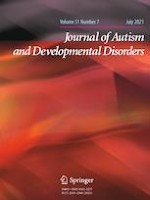14-09-2020 | Original Paper
Social Camouflaging in Females with Autism Spectrum Disorder: A Systematic Review
Gepubliceerd in: Journal of Autism and Developmental Disorders | Uitgave 7/2021
Log in om toegang te krijgenAbstract
Autism spectrum disorder (ASD) is a neurodevelopmental disorder with increasing prevalence, and a male-to-female ratio of 4:1. Research has been suggesting that discrepancy in prevalence may be due to the fact that females camouflage their symptoms. In this study, we aimed to systematically review evidence on the camouflage effect in females with ASD. Following the PRISMA guidelines, we reviewed empirical research published from January 2009 to September 2019 on PubMed, Web of Science, PsychInfo and Scopus databases. Thirteen empirical articles were included in this review. Overall, evidence supports that camouflaging seems to be an adaptive mechanism for females with ASD, despite the negative implications of these behaviours in their daily life.
